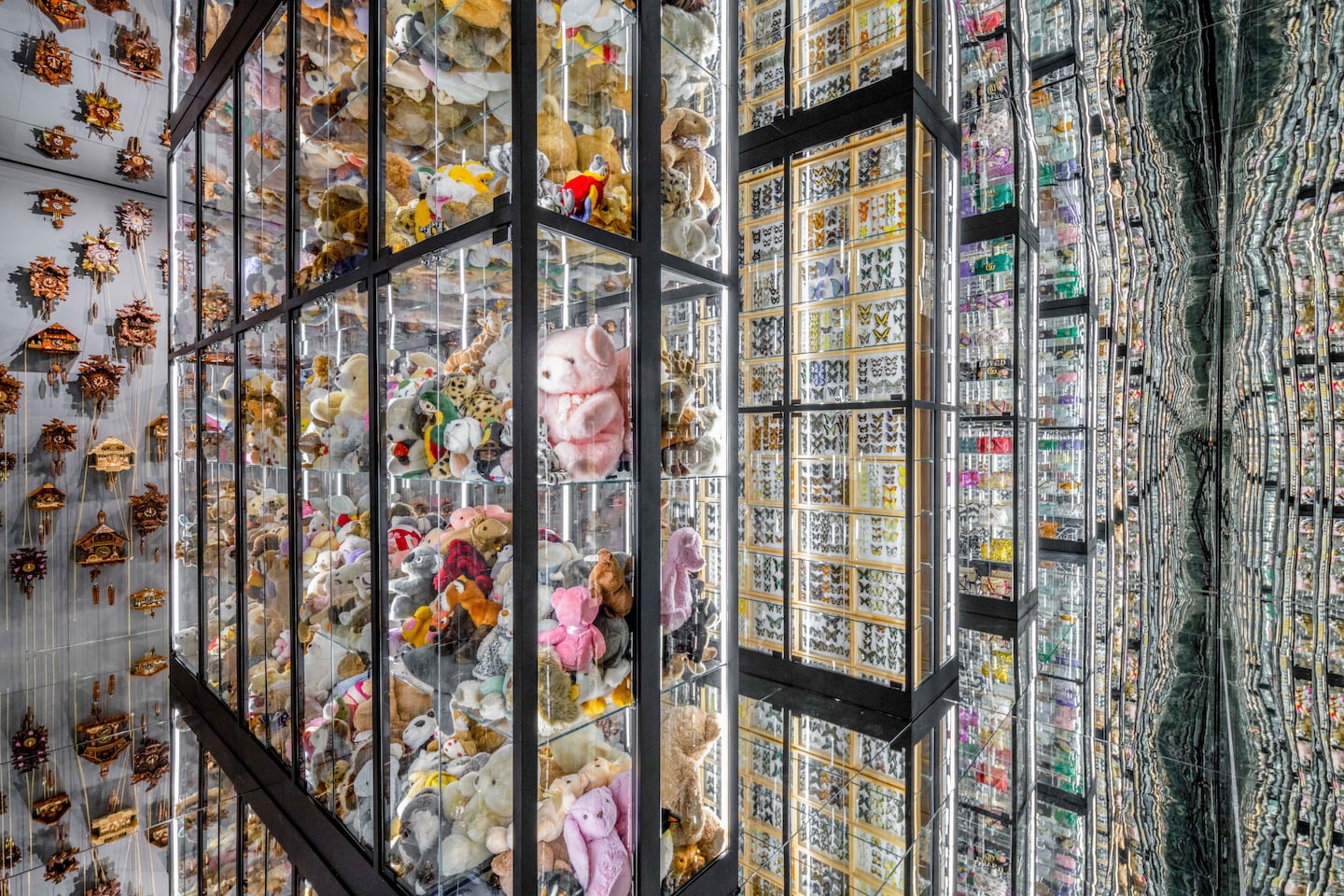
The Business of Fashion
Agenda-setting intelligence, analysis and advice for the global fashion community.

Agenda-setting intelligence, analysis and advice for the global fashion community.

Following its debut in Florence, this immersive multimedia exhibition begins its global tour with a stop in Shanghai, where it’s open to the public from May 28 to August 1.
Part of Gucci’s 100th anniversary celebrations, each room in the exhibition delves into different collections and the art, music, movies, myths and geographies that inspired creative director, Alessandro Michele, during their formation.
The result is a shimmering mishmash of glitter, mirrors, screens and a subway car installation, like the one that made an appearance back in Gucci’s Fall Winter 2015 campaign, Michele’s first collection at the helm. The collections that inspired Fall Winter 2018 fill one room from floor to ceiling, its shelves stacked high with thousands of cased butterflies, hundreds of cuckoo clocks and GG Marmont bags.
In another room, visitors find themselves in the 80s nightclub bathroom of the Berlin-set Spring Summer 2016 campaign, and behind the scenes in the sprawling modernist villa that hosted the Cruise 2020 “party of the century”.
ADVERTISEMENT
“I thought it was interesting to accompany people in these first six years of adventure, inviting them to cross the imaginary, the narrative, the unexpected, the glitter. So, I created a playground of emotions that are the same as in the campaigns, because they are the most explicit journey into my imagery,” said Michele, who also curated the exhibition.
With consumers tightening their belts in China, the battle between global fast fashion brands and local high street giants has intensified.
Investors are bracing for a steep slowdown in luxury sales when luxury companies report their first quarter results, reflecting lacklustre Chinese demand.
The French beauty giant’s two latest deals are part of a wider M&A push by global players to capture a larger slice of the China market, targeting buzzy high-end brands that offer products with distinctive Chinese elements.
Post-Covid spend by US tourists in Europe has surged past 2019 levels. Chinese travellers, by contrast, have largely favoured domestic and regional destinations like Hong Kong, Singapore and Japan.